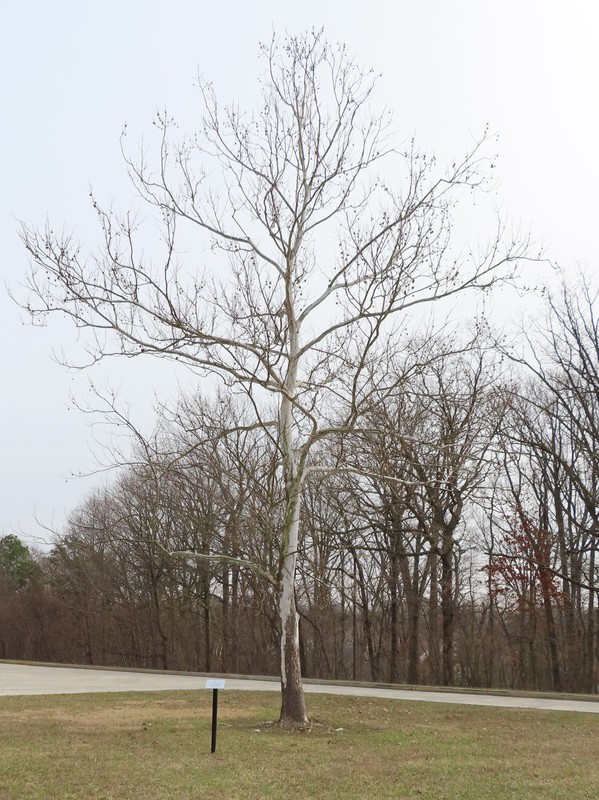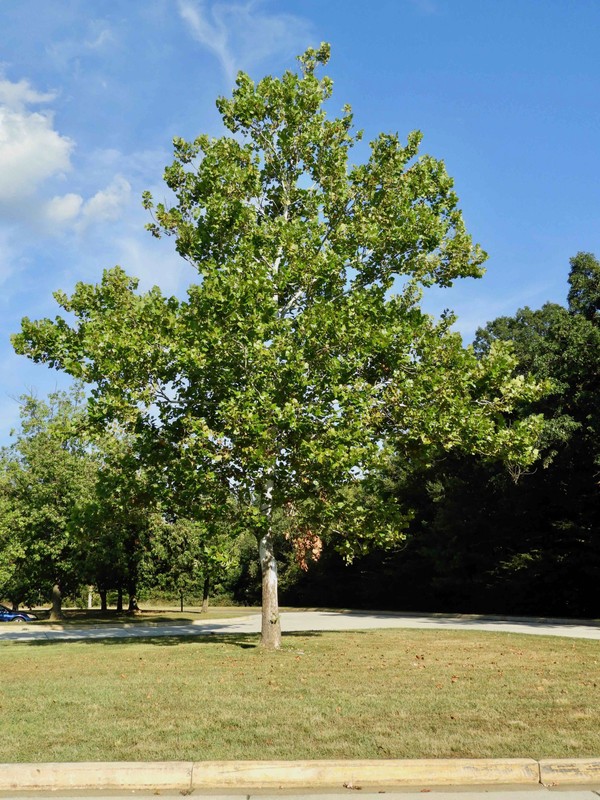Moon Tree
Introduction
Text-to-speech Audio
Images
Moon Tree in winter by Michael Herrick on HMDB.org (reproduced under Fair Use)

Moon tree at Goddard Space Flight Center by Ron Zeller, courtesy of NASA (reproduced under Fair Use)

Backstory and Context
Text-to-speech Audio
This tree's seed was one of many that traveled into space in the Apollo 14 command module in 1971 as part of a joint project between NASA and the US Forest Service. While Alan Shepard and Edgar Mitchell walked on the surface of the moon in February 1971, astronaut Stuart Roosa, a former US Forest Service wilderness firefighter, orbited the moon in the Apollo 14 command module, "Kitty Hawk." In the module were hundreds of seeds of loblolly pine, sycamore, sweetgum, redwood, and Douglas fir trees. Control seeds of these species were maintained on Earth for later comparison.
Stan Krugman of the US Forest Service, who managed the project, sent the seeds that had returned from space to stations in Gulfport, Mississippi and Placerville, California to attempt germination. The seed canisters had burst open upon their return during decontamination, so they were assumed not to be viable, but surprisingly over 400 seedlings grew. Many were planted around the United States for the nation's bicentennial in 1976. Some were planted alongside the control seeds, and after several decades there was no observable difference between the earthbound seeds and those which had orbited the moon. No list or systematic tracking of the moon trees exists, though Dr. David R. Williams at NASA has been compiling a list of known "moon trees."
On June 9, 1977, shortly after the opening of the Goddard Space Flight Center's Visitor Center in Greenbelt, Maryland, this sycamore (Platanus occidentalis) moon tree was planted. The tree now stands over 50 feet high.
Sources
Herrick, Michael. Moon Tree, Historical Marker Database. February 22nd 2020. Accessed June 27th 2020. https://www.hmdb.org/m.asp?m=145696.
Williams, David R. Goddard Space Flight Center Moon Tree, NASA Space Science Data Coordinated Archive. September 19th 2019. Accessed June 27th 2020. https://nssdc.gsfc.nasa.gov/planetary/lunar/moon_trees/goddard_tree.html.
Williams, David R. The Moon Trees, NASA Space Science Data Coordinated Archive. September 20th 2019. Accessed June 27th 2020. https://nssdc.gsfc.nasa.gov/planetary/lunar/moon_tree.html.
https://www.hmdb.org/PhotoFullSize.asp?PhotoID=510789
https://nssdc.gsfc.nasa.gov/planetary/lunar/moon_trees/goddard_tree.html
